Iceland: How much things cost & how to visit on a low budget
Since its currency crash in 2008, Iceland had gone from absurdly expensive to somewhat reasonable in cost, and that has prompted thousands of new tourists to stream in to see what all the fuss is about. It’s hard to find a visitor to Iceland who didn’t absolutely love the place, but you won’t find anyone who tells you it’s cheap, so planning ahead is essential. Prices have continued to creep up in 2015 and 2016, so it’s again among the most expensive European destinations.
Many visitors arrive on an Iceland stopover going between North America and Europe, but with very cheap flights to and from Europe it’s becoming popular for adventurous types from all over the continent. In 2013 I spent 9 days in the country, always checking for prices and the cheapest ways of doing things, so below I can lay out how to budget and what to do to keep costs down.
Note: This article was first written in late 2013, but all prices have been updated as of December 2016 to be current through 2017.
Reykjavik vs. the rest of Iceland: Where to go
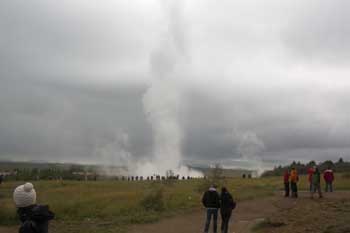
If you have one night or a few nights you are better off taking a bus or renting a car directly from the airport and heading east along the southern coast for some of the country’s best sights. If you have at least a week you’ll want to rent a car and do a lap around Iceland’s famous Ring Road, allowing you to see nearly everything the country has to offer in a neat and organized way.
Iceland accommodation: Hostels, guesthouses, and hotels
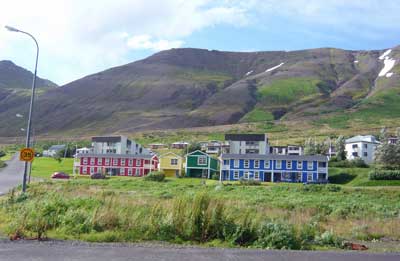
The most common form of accommodation in Iceland is a guesthouse and hostel combination which will have a mix of private rooms and dorm rooms, with shared bathrooms in down the hall. Most of them have fully equipped shared kitchens, so self-catering is at least as popular as eating out while exploring Iceland outside of Reykjavik.
High season (June through August) typical accommodation prices
All prices quoted in US dollars at a rate of about 110 Krona to US$1 in December, 2016.
- Hostel dorm bed: US$34 to US$58
- Single private with shared bathroom: US$85 to US$135
- Double private with shared bathroom: US$118 to US$140
- Double private with en-suite: US$130 to US$320 (and up)
Prices in Reykjavik are a bit higher than elsewhere in the country, but not by much. Prices in the off season are about 30% lower than in high season, but in the slowest months many places close so rates never go much lower than this.
Most Iceland guesthouses are NOT on the normal hotel-booking sites
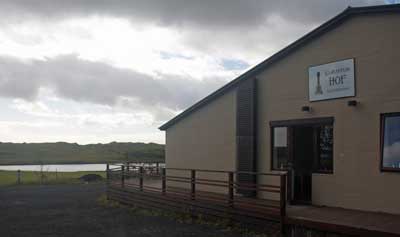
The good news is that when you get to Iceland, the tourism office will give you a directory of almost every guesthouse on the island, and there are other ways of finding these guesthouses and other informal accommodations. Even as of late 2016 you should be able to book a double room (with shared bathroom) for about US$120 per night in most towns in Iceland. If you do a hotel search you might see prices that are double that, but those are in the few formal hotels with 24-hour lobbies and such.
Increasingly, Airbnb and other online rental sites are the best place to find guesthouse accommodation in Iceland. As of only a few years ago, most places would be booked by phone or in person on arrival day, but now more and more places can be pre-booked, at reasonable prices.
Sleeping bag accommodation in Iceland
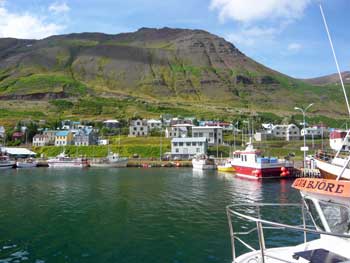
In a ‘sleeping bag accommodation’ (as it’s known in Iceland) you’ll get a bed with a mattress and often a pillow. So with even a cheap indoor sleeping bag, you’ll be comfortable and warm while saving quite a bit of money. For those renting cars, this is a highly recommended strategy.
You can rent sleeping bags in Reykjavik starting at around €12 per week.
Most Iceland attractions are free (the good news)
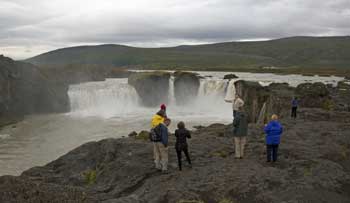
So to see all the glaciers and waterfalls and volcanic beds and other scenic attractions, it’s all free of charge with no admission cost or even parking fees. The larger attractions also have visitor centers where you can get local advice for free as well.
Iceland transportation: Rental cars and buses
Even as a lifetime public transportation fan, I’m very glad I gave in and rented a car to tour Iceland, even as a solo traveler. For the most part the roads are in perfect condition and virtually empty even in high season, so driving couldn’t be easier. Also, the country has stunning vistas every time you turn a corner, so being able to stop in the middle of the road even if there is no room to pullover, is critical.
The buses are modern but also expensive and running on very limited schedules. If you only have enough time to cover the main sights along the southern coast you might buy one of the bus passports that allows you to hop on and hop off, though a rental car is still much better and easier.
Rental cars in Iceland: What you need to know
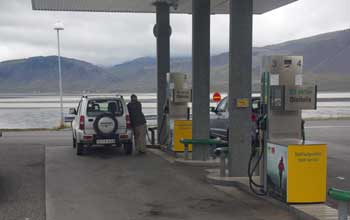
For an extra fee you can pay to reduce that deductible to almost nothing, but the more popular add-on is the Gravel and Glass insurance. For around €10 per day with this coverage you have a zero deductible if the vehicle gets damaged by gravel or if any glass gets broken by flying rocks (or anything else). Unfortunately, many of Iceland’s side roads and even a few of the main roads are covered in gravel, and if you drive at anything above a crawl, there will be some gravel flying around.
Personally, I normally decline add-ons like this but in this case I bought the Gravel coverage after reading a few horror stories in online reviews. I didn’t get any damage that I’m aware of, but the peace of mind was worth a LOT when driving on isolated gravel roads so I wasn’t petrified that I was chewing up the paint job just trying to stay safe on the roads.
Rental cars in Iceland
- 2-wheel drive compact (manual): US$230 per week and up plus add-ons
- 2-wheel drive compact (automatic): US$270 per week and up plus add-ons
- 2-wheel drive mid-size: US$450 per week and up plus add-ons
- 4-wheel drive van or SUV (automatic): US$650 per week and up plus add-ons
Daily rates are about 20% as much as weekly rates, so 5, 6, or 7 days cost the same.
Add-ons
Gravel coverage: US$10/day
GPS (highly recommended): US$10/day
Additional collision waiver: US$10/day
Fuel prices in Iceland
Every gas station in the country has the same prices, which don’t seem to change much. As of December 2016, a liter of petrol is 194 Krona, which is about US$1.75 or €1.63, or about US$7.50 per gallon.
Bus pass prices in Iceland
For a quick day trip from the airport to some local sights you can spend as little as US$90 per person, but for the longer distance buses you’ll spend at least US$130 to US$250 depending on length of time in order to hop on and hop off.
A Ring Road passport will cost around US$400 per person, so for two people it’s no cheaper than renting a car, even after fuel is taken into account, and for 3 or 4 people it’s definitely cheaper renting a car.
Food prices in Iceland
Here’s the thing: sit-down restaurants in Iceland are very expensive by international standards, so there aren’t very many of them. Obviously Reykjavik has many restaurant choices but most smaller towns might have only a few at most. The good news for budget travelers is that fast-food options are more plentiful, and self-catering is even cheaper and easier.
Restaurant prices in Iceland
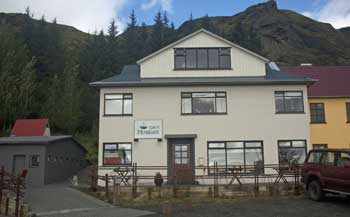
A soft drink, coffee, tea, or even bottled water will generally be between US$3 and US$5 in a restaurant. A pint of beer will typically start at around US$7 at even the cheapest places, while wine and spirits cost even more.
Fast food prices in Iceland
In Reykjavik and larger towns (which might only have 2,000 residents) you’ll have many fast food options including Subway, Quiznos, and usually a few local burger or hot dog places. Prices for a sandwich at Subway are about US$6 for a 6-inch and US$10 for a foot-long, so they aren’t too much higher than elsewhere in Europe, and are sure cheaper than proper restaurants.
More good news for drivers is that many gas stations around the country have fast food restaurants built in, so it’s fast and easy to pick up a sandwich or hot dog by the side of the road.
Hotel breakfast prices in Iceland
Many hotels and guesthouses in Iceland serve breakfast, but it’s almost always at an extra fee, and many don’t serve anything at all. If a breakfast is offered it will typically cost between US$12 and US$15 for a buffet of cereals, bread, cold cuts, cheeses, hard boiled eggs, juices, coffee and tea, and perhaps some pastries.
Making your own self-catering breakfast will be cheaper, but since you can stuff yourself for a flat fee at the breakfast buffets it might be worth it to save yourself the hassle of shopping the day before and making breakfast in the morning.
Self-catering in Iceland
The best budget tip for Iceland is to buy and prepare your own food, and you can literally do it for all three meals per day if you prefer. Since Iceland has almost no national “must-try” dishes, you can buy and prepare your own food without worry about missing anything meaningful.
Nearly every guesthouse in Iceland has a shared kitchen where at least half the guests will be storing and preparing breakfasts and even dinners. They have refrigerators, coffee makers, electric kettles, pots, pans, dishes, and silverware, as well as salt and other spices, so you can buy just the food and you’ll be able to prepare it all.
Supermarket prices in Iceland

For example, you can buy a 400 gram (1 pound) block of Havarti cheese for around US$5, but a similar looking cheese right next to it on the shelf might be US$15 for the same amount. The same is true for lunch meats. Sliced ham can be US$3 for enough to make 2 sandwiches, but sliced roast beef might be US$10 for the same amount.
Some sample prices in the cheaper Iceland supermarkets
- Sliced white bread: US$1.70 per large loaf
- Fresh baguette: US$1.50 to US$2 each
- Hot dog buns: US$2.50 for 5
- Pork hot dogs: US$3.50 for 5 large hot dogs
- Cheap Havarti or other local cheese: US$5 for 400 grams (1 pound)
- Imported cheese: US$10 to 15 for 400 grams (1 pound)
- Sliced ham for sandwiches: US$5 for 400 grams (1 pound)
- Sliced roast beef for sandwiches: US$12 for 400 grams (1 pound)
- Pasta: US$1.50 for .5 kilogram (1.1 pounds)
- Pasta sauce: US$3 for a .5 liter jar
- Ground beef: US$5 for .25 kilos (half pound)
- Bake-at-home pizza: US$5 to US$7 for one person
- Bag of tortilla chips for 2 or 3 people: US$2
- Jar of salsa for those chips: US$3
- Breakfast cereal: US$3 to US$5 per box
The prices above are for many of the cheaper and more common things that budget tourists buy in Iceland. As mentioned above, if you want something exotic and imported, it might cost double or triple what you pay at home, if you can find it at all.
Alcohol prices in Iceland
In restaurants and bars throughout the country you’ll pay at least US$8 for a pint of beer, and at least US$10 for a glass of wine or a simple cocktail. If it’s a fancy place you’ll pay even more, of course.
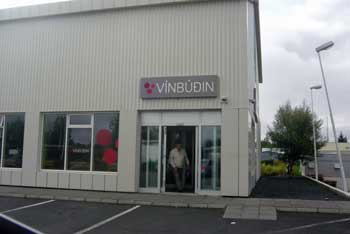
Here are some typical prices for alcohol:
- 330ml can of local beer: US$2 to US$3
- 500ml can of local beer: US$2.50 to US$4
- Cheapest bottle of wine: US$10 to US$12
- .7L bottle of off-brand vodka: US$30
- .7L bottle of mid-level brand vodka: US$50
Bottom line on doing Iceland as cheaply as possible
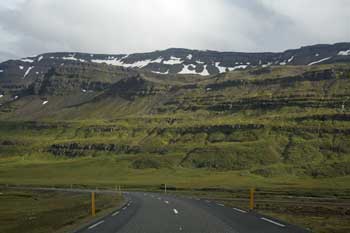
Whether you are going to get dorm beds or private rooms, as long as you will have your own wheels it’s worth renting a sleeping bag. You get the same bed and same services for about US$10 less per night, which will pay for a week’s rental of an indoor sleeping bag.
Unless you are a terrible driver or afraid to drive, it’s highly recommended to rent a car instead of trying to get around using buses. Once you get there you’ll see that having 100% flexibility with a car compared to almost no flexibility with a bus, is worth a LOT.
Instead of trying to be cheap with transportation, be cheap with self catering food and drinks for yourself. If you have at least a small group of people you’ll be able to have a party each evening in or near the shared kitchen of your guesthouse, and it will be more lively than any restaurant in town.

Roger, I will be traveling to Iceland for three days only and can’t afford to rent a car but will do a bus tour. Which one would you chose? Have you ever thought of writing travel guidebooks, you certainly would do very well. Thank you
Christina,
First off, thank you. Actually, this website is the way I make my living and it’s basically a living guidebook that I update all the time.
I looked at the bus tour options before I went a few years ago and the only one operating at the time was Reykjavik Excursions. They look very solid, but I do notice there a few other competitors. If you can get a better price with one of the newcomers it might be worth it. I’ve just had a look at the websites and they all look really good. One thing about Iceland and all of Scandinavia is that everything is tightly regulated and they don’t generally cut corners. In other words, I’d feel safe on any of the main bus tours. There are plenty of countries where I’d worry about taking a newer bus-tour company, but not in Iceland. I’d check TripAdvisor reviews before you book. I wish I could be more help. I’m sure you’ll have a great time. -Roger
Hey Roger,
Really great information you’ve got here!
We are a couple heading to iceland for a short honeymoon trip for first 2 weeks of March and intend to selfdrive. Would really appreciate your advice and your experience on travelling within iceland here~
1)For the period which we will be travelling, will a 2WD is safe for rental? Intending to hire for 2 weeks so a 4WD will really be costly.. and we wouldnt be going off road as we are planning a route via an online guide..
2)I noticed you mentioned for tour grps they will head to better sights for northern lights viewing.. so we are quite divided between should we take a tour or simply selfdrive
3)As we will be doing self drive, for experiences like ice caving and glacier hiking, these two would need to be guided right? Is there any whuich you highly recommend?
Thank you once again and hope to hear from you soon 🙂
Mervyn,
I’m always happy to hear that this information helps.
1) I’m not 100% sure on this. It will be below freezing at night that time of year, so it might snow a bit. I don’t believe Iceland gets too much snow at sea level, and most of the Ring Road is very near sea level, but I suppose it could happen. I’d think that the roads near Reykjavik would be cleared pretty quickly, but most of the Ring Road is quite remote so it could take days. In other words, you’d probably be fine, but you could get unlucky and have to deal with snow. Hopefully you can get a more definite answer somewhere else.
2) I haven’t done a Northern Lights tour, but from what I’ve read about them they are really well organized and pretty good value. If I was going that time of year and really wanted to see the lights, I’d probably do a tour rather than drive myself.
3) My own trip there was in August so I focused on the summer sights and activities. I might go again this year, but probably in summer again. I really wish I knew more about the winters there. Again, I’d be tempted to do a tour because most of the island is empty and finding your own way could be challenging if the weather gets bad. Best of luck. -Roger
Hey Roger,
Apologies for late response but thats great info once again! Really appreciate and we look forward to our first visit to iceland in march 🙂
Hi.
I’ve never been in Iceland and now i have an offer to work at the Keflavik airport.The think is i don’t know the costs for living there.They offer me 12-13 euros per hour and 200 hours or more per month.I know that Iceland is an expensive country so i’m afraid.It will be enough that salary? I will need a place to live 5-6 months so what price a can expect for rent a room ? Thanks:)
Jovan,
Iceland is expensive and getting more so each year lately. But I don’t know much about housing costs or other costs for residents, as my research and data is all for tourists. I suggest using a site like numbeo.com for that. Best of luck. -Roger
i will love to come to iceland but am in nigeria how much does it cost from nigeria down to iceland
Royal,
You’ll want to check an airfare search engine such as skyscanner or Momondo for that kind of information. Best of luck. -Roger
Hi.
My husband and I are traveling to Iceland for 2 weeks in July/August this year. We are thinking of hiring a camper van hoping that it will be cheaper than hiring a car and also paying to stay in hostels etc. Do you think this is a good idea and do you know the cost of a camper van site in a caravan park or can you just park your van anywhere off the road to sleep.
Ina,
I’m not too familiar with the camper van scene in Iceland, and it doesn’t seem to be nearly as popular as in New Zealand, Australia, or the US. I’ve read the camper van rentals in Iceland are quite expensive, just like almost everything else, so you’d really have to check the rates to see how much money it might save.
I don’t remember seeing an abundance of camper van parks or campsites, although I’m sure there are quite a few there. My guess is that you would not be able to just park anywhere and sleep, but there are many national parks and such that are probably suited to camper vans. Sorry I can’t be of more help. If you can find an affordable camper van I think it would be an excellent way to travel and experience Iceland. It’s a very wide-open island and it would be easy to drive one on most of the main roads. Good luck with this. -Roger
Hi there, I found this very useful. Just wondering about how experienced of a driver you have to be in order to rent a car in Iceland? I am newly licensed.
Ellen,
It’s possible that some car rental companies in Iceland won’t rent to those under 25, as that is a policy that some agencies have elsewhere. But I’ve never heard of any agency requiring proficiency other than just a valid driver’s license.
The better news is that driving in Iceland is extremely easy, once you get outside central Reykjavik. If you rent a car at the big airport, which is an hour’s drive from Reykjavik, it’s even easier. The rental agencies in Reykjavik are actually in an office-park area near the small airport, so getting out of town from there is quite easy as well. Most cars and pretty much all cheaper cars will be manual transmission, but automatics are available. If you can deal with that, you’ll find Iceland to be about as easy as driving gets. The signs are all very clear, the roads are in good condition, and traffic is extremely light. Let me know if you have any other questions. -Roger
This is an extremely useful source of information – thank you!
Hi Roger, a group of us are heading to Iceland in February for a week for the first leg of our travels around Canada and America. We have sorted our accommodation, blue lagoon other small activities we want to do over the week, and an international driving permit. Now we’re having trouble with car hire at the moment, as we’re not too sure what the price includes except what is written in black and white. We have gone through Avis, and a standard 5 door has come to £187. Do you know if Insurance is included in the price of car hire companies, or is that something we have to sort out ourselves? We can’t find anything in the small print that covers this. We’ve also read there will be a safely deposit taken, and other bits they need to cover themselves on. We’ve also heard about paying excess as well? Haven’t read it in the t’s&c’s though, so I don’t know how much that is true.
We just don’t want to get out there on the first day of our 3 month adventure and be landed with lots of extra charges, and a possible decline of car hire because we didn’t sort the right information out. Your article, even a few years old has helped a group of young travellers immensely.
Thankyou in advance.
Luka,
I’m happy this article has been helpful. My understanding of the car hire laws in Iceland is that basic liability coverage is included in the price by law. That isn’t true in the United States, by the way. So the price you were quoted should include the most important insurance.
However, when you get there they will try to sell you at least two additional policies. One will cover any damage to the vehicle itself, with a zero deductible. If you have your own car insurance it might cover this part, although there might be a deductible of US$500 or more, so this policy is more about peace of mind.
The other policy they will pitch is one that covers damage to the vehicle by driving on gravel. I ended up getting this coverage, also for peace of mind, and I think it cost me around US$8 per day. If you are driving around the capital and southern coast, you could probably skip this coverage and be fine. But if, like me, you are driving around the Ring Road all the way, you will encounter several sections of gravel roads that might last 50 or even 100 kilometers. There are also some attractions such as water falls that are 10 KM down a gravel road. What happens is you start driving down those roads and the faster you drive, the more gravel is flying around under the car. If I didn’t have the coverage I would have been terrified to drive more than 10 KPH. But since I had it I could drive 30 KPH on the gravel roads without worry. In the end I didn’t see any noticeable gravel damage on my car, but still I felt it was worthwhile and I’d do it again.
Once again, the above is what I experienced and I believe is still correct, but I can’t be 100% sure.
Good luck. I’m sure you’ll love it, and let me know if you have any other questions. -Roger
Greetings,
I am a nature photographer. While planning my trip to Iceland will be worth the scenery alone, I have seen little to no discussion regarding wildlife, probably because there isn’t a lot, but I am curious if you know if there are places (or recommendations) for those seeking to include wildlife photography into there picturesque landscape photos. Whales, seals seabirds, fox, caribou or any other such creatures? As an aside, does this famous Ring Road circumvent the island close to the shores or is it further in? Thank you.
Mark,
Iceland has its famous (non-wild) horses, and it’s also famous for Puffins, but aside from that I don’t know much about its wildlife. There are obviously many birds and sea creatures, though I’d assume that there are almost no native mammals or other land creatures. I’m sure there are many good sources for that information elsewhere.
The nature scenery is the best I’ve seen anywhere, and I’ve been almost everywhere. I’m sure you’ll love it if you go.
The Ring Road is a nice mix of coastal, near coastal (where the coast in in sight), and some inland portions. Most of it is inland where you can’t see the ocean, but almost every kilometer of it is gorgeous and interesting. You should be able to see it on any online map, including Google. There is exactly one main highway that goes around near the edges of the island, and that is the Ring Road. In the south and in the northwest there are also many roads that cross and go way off the Ring Road, and in the southwest around Reykjavik there are a few other highways and main roads. Let me know if you have any other questions. -Roger
Thank you once again, Roger for your detailed answer … much appreciated. I don’t think I can quite wing it each day with accommodations – I need the certainty, I’m afraid, especially in the busiest part of the season. I am starting to search for websites that list guesthouses and have found a few here and there. If I find a few particularly useful ones, I will come back to this page and share them so that others may benefit.